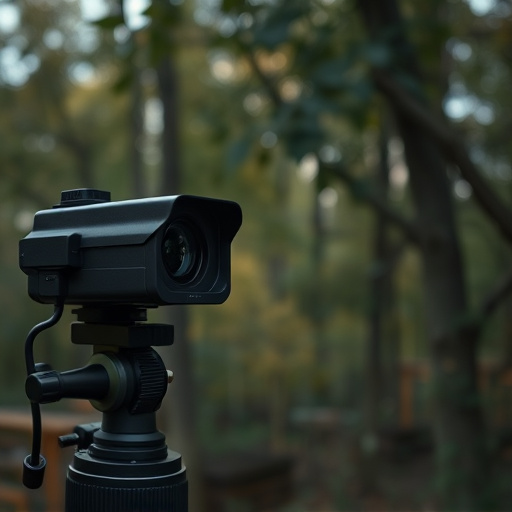Radio Frequency (RF) detection is a sophisticated yet discreet method for renters to safeguard their properties, identifying hidden cameras through their electromagnetic signals. This guide emphasizes the importance of installing small, indoor security cameras strategically placed to monitor entry points without drawing attention. Using specialized RF detectors, tenants can locate and disable covert surveillance equipment, enhancing privacy and security with non-invasive techniques.
Uncover hidden surveillance with our comprehensive guide to RF detector sweeps. This tutorial equips renters and security professionals with the knowledge to identify discreet cameras using radio frequency (RF) detection techniques. From understanding the fundamentals of RF detection and its role in camera sweeping, to advanced step-by-step guides for setting up discrete security cameras, this article covers all aspects essential for successfully navigating the world of hidden camera detection, ensuring peace of mind for tenants and landlords alike.
- Understanding RF Detection and Its Role in Camera Sweeping
- Setting Up a Discrete Security Camera for Renters: A Step-by-Step Guide
- Advanced Techniques for Uncovering Hidden Cameras Using RF Detector Sweep
Understanding RF Detection and Its Role in Camera Sweeping
Radio Frequency (RF) detection plays a pivotal role in sweeping hidden cameras, especially for those using discrete security cameras for renters. RF technology is adept at identifying and locating electromagnetic signals, making it an effective tool to uncover surveillance devices that operate wirelessly. These signals can emanate from various sources, including hidden cameras, which often use RF for transmission due to their compact size and covert operation.
By employing specialized RF detectors, individuals can effectively search for these signals, helping them pinpoint the location of hidden cameras within a given area. This is particularly useful for renters who want to ensure their privacy without investing in permanent security systems. RF detection allows for a discrete and efficient method of identifying potential surveillance equipment, fostering a sense of security and peace of mind.
Setting Up a Discrete Security Camera for Renters: A Step-by-Step Guide
Setting up a discrete security camera is an excellent way for renters to protect their property and ensure peace of mind. This step-by-step guide will walk you through the process, focusing on discreet options ideal for tenants. Begin by choosing a camera that blends seamlessly with your environment; small, unobtrusive models designed for indoor use are perfect for this purpose. Positioning is key—place it in a strategic spot where it can monitor entry points or common areas without drawing attention. Ensure the camera has a clear view and is out of reach to prevent tampering.
Next, connect the camera to your Wi-Fi network, allowing you to remotely access its feed via a dedicated app. Configure the settings for discrete operation, including motion detection sensitivity and recording scheduling. Test the setup by reviewing the live feed and ensuring it captures clear images without sounding alarms. With these steps completed, your discrete security camera will provide round-the-clock surveillance, giving renters control over their space without compromising aesthetics or privacy.
Advanced Techniques for Uncovering Hidden Cameras Using RF Detector Sweep
Uncovering hidden cameras has become a critical skill, especially for renters who prioritize their privacy and security. In this context, RF (Radio Frequency) detector sweeps emerge as advanced techniques to detect Discrete Security Cameras. These non-invasive methods are designed to identify signals emitted by hidden cameras, offering a discreet and effective solution for homeowners and renters alike.
RF detector sweeps utilize specialized equipment to scan frequency bands commonly associated with security cameras. By analyzing the radio frequency spectrum, these devices can pinpoint active camera transmissions, helping users locate hidden surveillance equipment. This technique is particularly useful for renters who want to ensure their rental property isn’t equipped with covert cameras, thereby protecting their personal spaces and privacy.
In conclusion, RF detector sweeps prove invaluable in uncovering hidden cameras, especially for those renting properties. By understanding RF detection and employing advanced techniques, renters can ensure their privacy and safety. Following the step-by-step guide on setting up discrete security cameras tailored to renters, you can proactively protect your personal space from invasive surveillance. Stay vigilant, stay secure.
